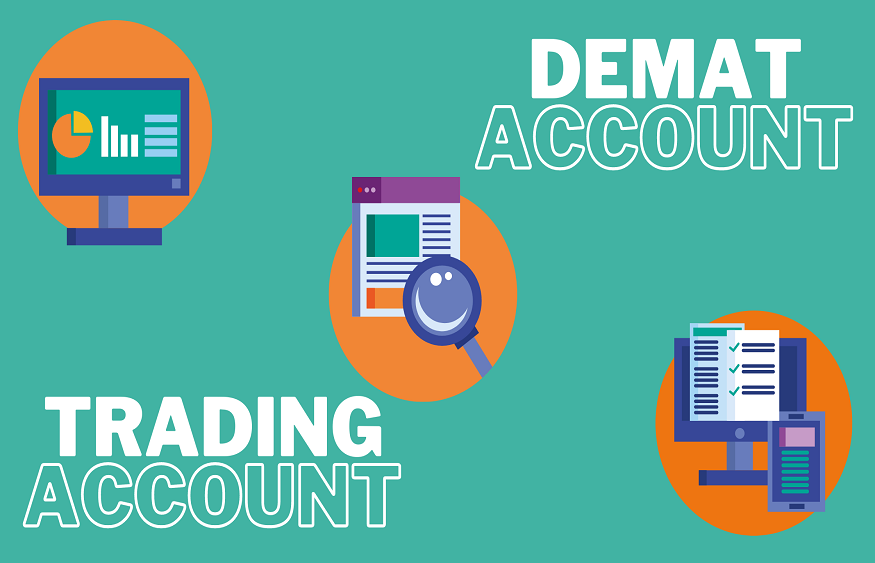A Demat account and a Trading account are two distinct types of accounts used in the financial markets, each serving a different purpose. Understanding the differences between the two is crucial for investors and traders. Let’s explore how a Demat account differs from a Trading account:
Demat Account:
A Demat account, short for Dematerialized account, is a digital account used to hold and store securities in an electronic format. It serves as a repository for your investments, enabling you to hold shares, bonds, mutual funds, exchange-traded funds (ETFs), and other financial instruments in a paperless form. Here are some key features of a Demat account:
- Electronic Holding: A Demat account eliminates the need for physical share certificates. It allows you to hold securities in an electronic format, making it convenient and secure.
- Transfer of Securities: With a Demat account, you can easily transfer securities between different accounts.
- Ownership Confirmation: The Demat account provides ownership confirmation of the securities you hold. It acts as proof of your investments, making it easier to track and manage your portfolio.
- Dividends and Interest: Any dividends, interest, or corporate actions related to the securities held in a Demat account are credited directly to the account.
Trading Account:
A Trading account, on the other hand, is used for executing buy and sell transactions in the financial markets. It is specifically designed for trading activities and acts as an intermediary between you and the stock exchange. Here are some key features of a Trading account:
- Order Placement: A Trading account allows you to place orders to buy or sell securities in the financial markets.
- Market Data: A Trading account provides real-time market data, including stock prices, indices, and other relevant information.
- Trade Execution: Once you place an order through your Trading account, it is routed to the stock exchange for execution.
- Margin Trading: Trading accounts also provide the facility of margin trading, which allows you to trade with borrowed funds, commonly known as leverage. This can amplify both potential profits and losses.
- Transaction Settlement: The Trading account handles the settlement process, which involves the transfer of securities and funds between the buyer and seller. It ensures that the securities are delivered and the payment is received in a timely manner.
Key Differences:
Now that we have explored the features of both Demat and Trading accounts, let’s summarize the key differences between them:
- Purpose: A Demat account is primarily used for holding and storing securities in an electronic format, while a Trading account is used for executing buy and sell transactions in the financial markets.
- Nature of Transactions: A Demat account focuses on the transfer and management of securities, whereas a Trading account facilitates the execution and settlement of trading transactions.
- Ownership Confirmation: A Demat account provides ownership confirmation of the securities held, while a Trading account primarily focuses on the execution of trades rather than ownership confirmation.
- Income and Dividends: A Demat account directly receives dividends, interest, and other corporate actions related to the securities held, while a Trading account is not directly involved in receiving such income.
Wrapping up
Now, you get it with demat and trading account, right!
